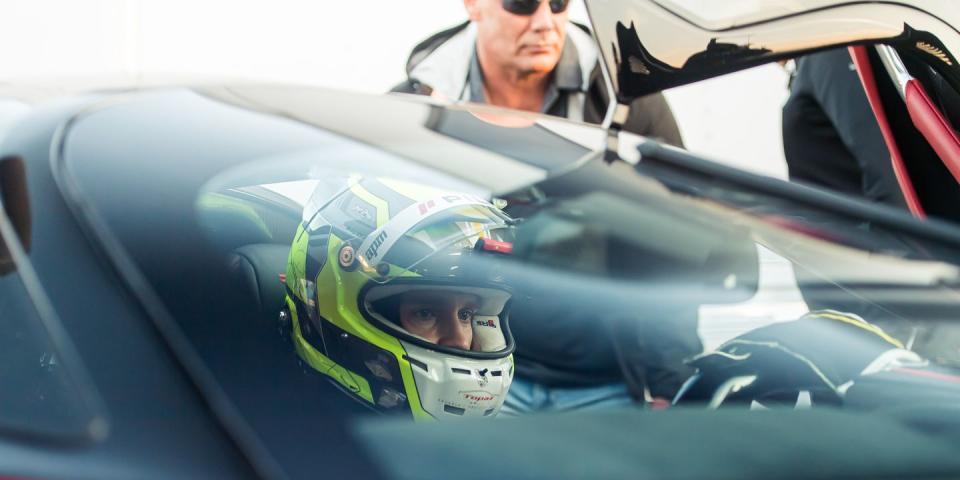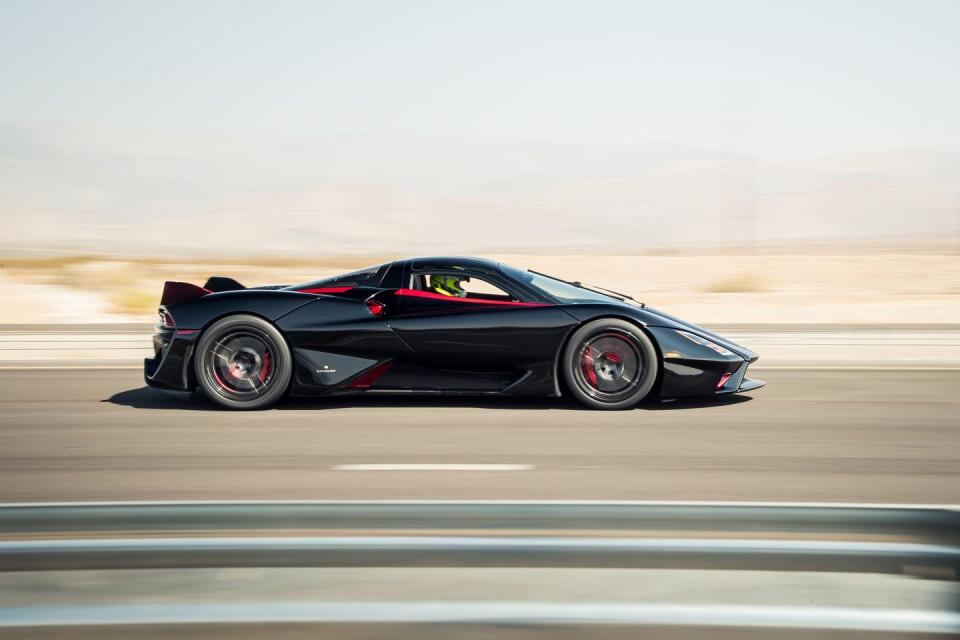SSC Didn't Think Bugatti's Top-Speed World Record Was Valid, And Broke it Anyway

Jerod Shelby, founder and CEO of American supercar maker SCC, helped design the criteria Guinness World Records uses to validate a "world's fastest production car" claim. His company followed Guinness's method, which takes the average of two top-speed attempts run in opposite directions, when the SSC Ultimate Aero set a 256-mph record in 2007. When Bugatti set a top-speed record with the Veyron Super Sports, and Koenigsegg set a subsequent record with the Agera RS, those automakers also followed the Guinness method. So Shelby—no relation to American racing legend Carroll Shelby—was surprised when Bugatti chose not to validate a two-way average when the automaker claimed a new 304.773-mph record with the Chiron Super Sport 300+.
But that wasn't Shelby's only qualm about Bugatti's record claim. The French automaker was up-front about its decision not to set a two-way average, Bugatti claiming that its Ehra-Lessein test track didn't offer adequate safety in both directions. The bigger issue, as Shelby sees it, is that the Chiron shouldn't have been able to do nearly 305 mph in the first place.
"To me there's definitely theoretical limits with every vehicle," Shelby said in an interview with Road & Track. "I mean, this comes down to talking about engineering and science. We're talking coefficient of drag, horsepower, gear ratios. In a perfect world, you and I or a lot of engineers can calculate what that theoretical speed is. The Chiron [Super Sport 300+], in a theoretical world, can do 286 mph. And that's in production trim."
To be clear, the record-setting Bugatti was not identical to the limited-edition production Chiron Super Sport 300+ the company later released to commemorate the feat. The record-run Chiron had a lowered ride height, a full cage, no passenger seat, and (obviously) no electronic speed limiter, all of which Bugatti disclosed. But Shelby remains perplexed: Based on his math, factoring in the Chiron's gear ratios, coefficient of drag, and claimed power output, Shelby says that 304.773-mph speed should be beyond the car's theoretical max.
Most cars won't ever reach their theoretical limit, Shelby said. The Koenigsegg Agera RS got close with its 277.9-mph two-way average, he said, though he wouldn't reveal the theoretical vMax he calculated for that car or his own record-setting SSC Tuatara. But based on the specs Bugatti published, Shelby doesn't believe a Chiron Super Sport 300+ could reach the claimed speed without modification.
Shelby says he has no interest in a public he-said, mega-corporation-worth-billions-said public spat. But he decided to one-up Bugatti anyway, even though he doesn't think the Chiron Super Sport 300+ record was valid. He wanted to claim a higher top speed, no asterisk.

So, assuming the data that SSC released today is validated, the Tuatara's 316-mph two-way average will be the new world record for production cars. Regardless of what you think about the most recent Chiron's record, that claimed speed has been bested. (Bugatti, for its part, claims to be moving on from top speed records altogether.) Now, for SSC, it's time to prove that the Tuatara isn't just the fastest hypercar, but the best overall. Shelby emphasizes that it's no one-trick pony, capable of daily driving but having undergone thousands of miles of testing beyond 200 mph. But if Guinness verifies the run, it'll be quite the feather in SSC's cap.
You Might Also Like

 Yahoo Autos
Yahoo Autos 